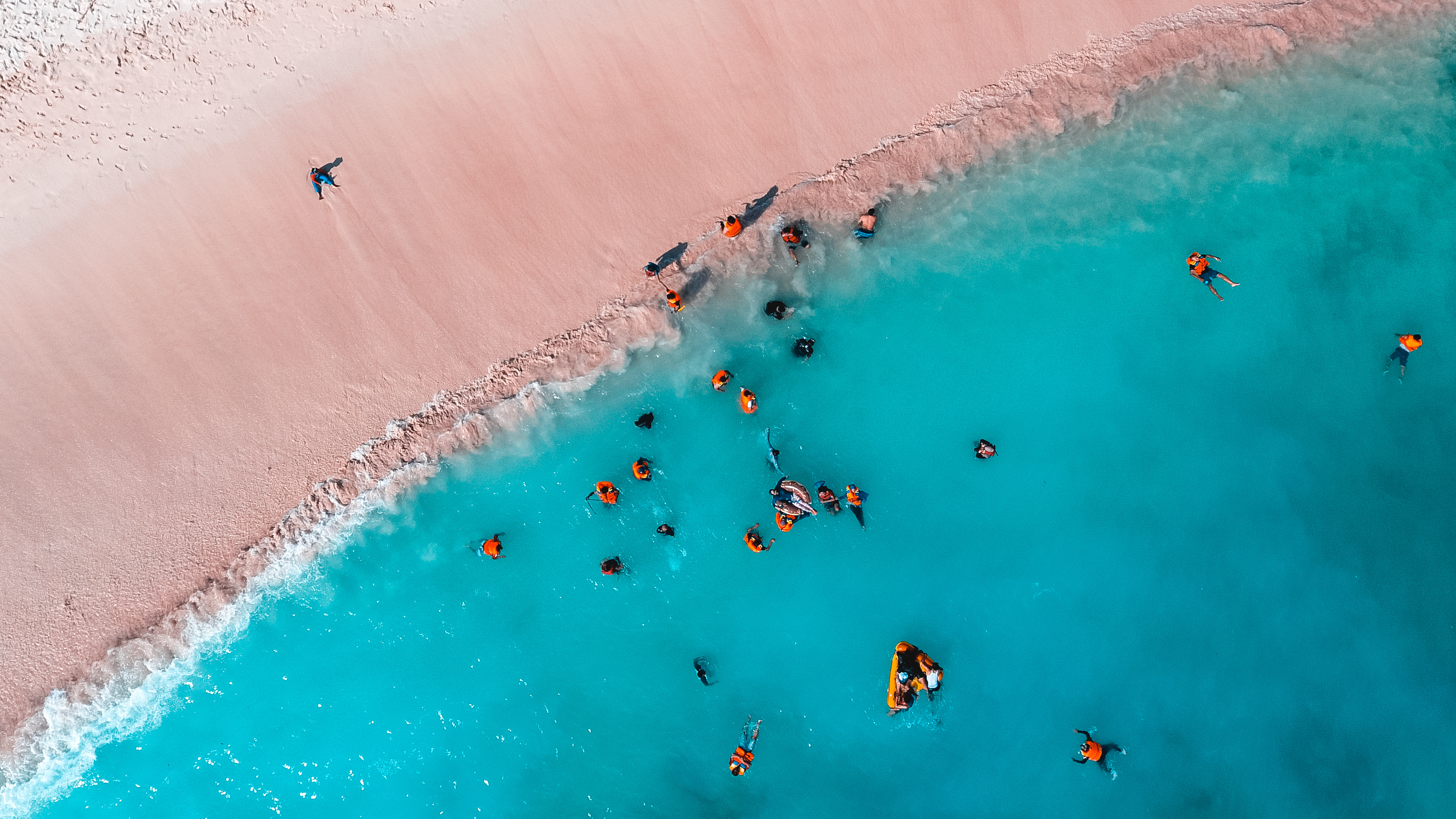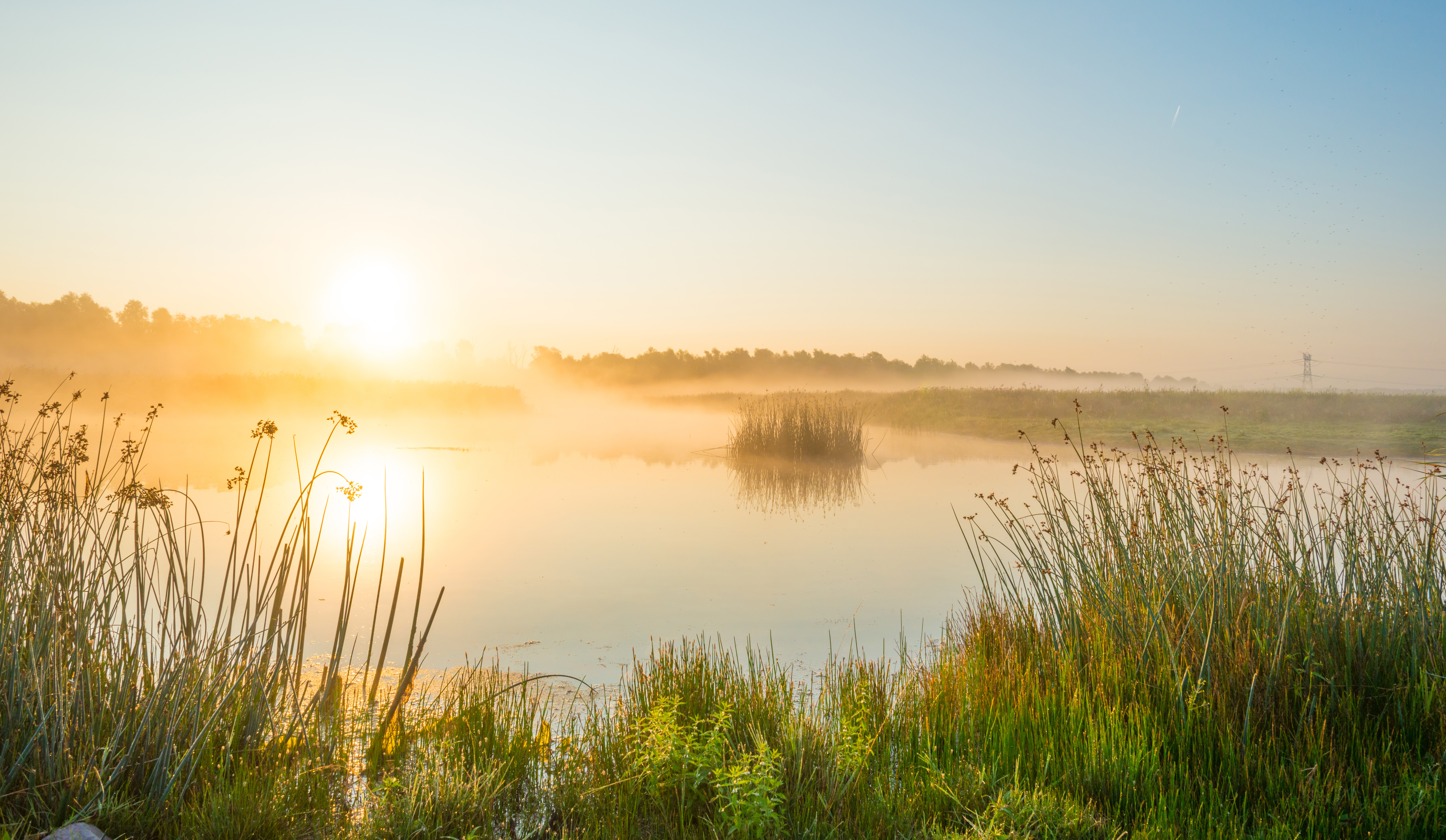
How to Take the Perfect Photo in Summer
By Anna Jones at Eversure,
26th June 2025, 10 min read
Are you gearing up to make the most of the warm weather and sunny days with your camera in hand? Whether you're staying in the UK or taking your photography equipment abroad with you, the long summer sunlight hours offer the perfect opportunity to capture scenes full of life and colour. Compared to winter, photographers have more time and flexibility to capture stunning photos. If you know how to make the most of the summer light, this season offers endless photo opportunities.
This guide will go through specific camera settings to help you manage harsh sunlight, prevent overexposure and maintain rich colours so you don't have to be put off by overpowering summer light, as some photographers are. We'll also cover compositional advice tailored to this time of year. As the light can be intense and change rapidly, it's recommended that, as always, you should shoot in manual mode to retain control and precision.
If you plan to take your camera on hikes, the beach or abroad, you should be aware that sandy, wet or busy environments increase the risk of accidental damage or theft. To focus on taking the perfect photo without worry, protect your gear with camera insurance from Eversure.
Exposure
Summer photography can be challenging due to the strong light. As the sun is higher in the sky, the harsh lighting and strong shadows can result in overexposed highlights or washed-out skies.
To work around this, underexpose your image slightly by using your camera's exposure compensation feature, typically located near the shutter release button or within the quick menu and is usually marked with a +/- symbol. To preserve detail in bright areas with little contrast, like sunlit buildings, pale skin or reflective surfaces, try adjusting the exposure by -0.3 to -1. If you prefer to shoot in aperture or shutter priority mode, then this adjustment is for you. It allows you to fine-tune brightness and protect the key highlights without needing to use the camera in full manual mode.
If you're working in manual mode, another way to take control of the exposure is by selecting a low ISO of around 100-200 to reduce noise, in addition to using a narrow aperture of around f/11 to f/16. These adjustments will limit the amount of light entering the lens while boosting the depth of field, and it will be most necessary to make the changes when shooting at midday or when the sun is particularly bright.
If you need to refresh your knowledge on the exposure triangle, you can do so here.
Polarising Filter
A polariser will deepen blue skies, enhance cloud detail, reduce glare and eliminate reflections from water and glass. This results in increased colour saturation and reduced haze for a photo with more contrast. To get the most out of the filter, you should keep the sun to the side of your frame.
Be aware that polarising filters reduce light by about two stops, so you'll need to be mindful of your shutter speed. If you're hoping to shoot fast action photos, make sure to pack a tripod and be ready to increase your ISO to maintain sharpness.
White Balance
Auto white balance can struggle in strong sunlight or deep shade, resulting in photos appearing too warm or too cool.
To keep the colours in the photo representative of the real thing, you should consider manually adjusting your white balance by using the Kelvin scale. In bright sunlight, a setting of around 5200-5600K should deliver a balanced result. If you're shooting at golden hour or sunset, then you'll need to increase the value to 6000-7000K - this will enhance the warmth of the photo and preserve the soft, golden glow. A higher Kelvin value will be helpful for photographing in shaded areas as it should offset the cooler, blueish tones.
Shooting in RAW gives you maximum flexibility to fine-tune the balance and exposure post-shoot. As natural light can be unpredictable, this is a necessary step.
Golden Hour and Blue Hour
With the long summer days comes more chances to shoot during the golden hours which is right after sunrise and just before sunset - the lighting at this time is at its softest and most flattering, perfect for portraits, landscapes and macro photography as the warmth and depth will be added through long and angled shadows. Shooting at these hours also means you avoid the harsh midday light.
Blue hour, which is just before sunrise or after sunset, offers a cooler tone to your photos and is ideal for cityscapes, seascapes or other scenes where reflections or mist enhance the composition.
As the sun rises earlier and sets later in summer, golden hour arrives earlier in the morning and lingers later in the evening, so you'll need to be prepared for early starts or late sessions.
Photo Composition
Whether you want to photograph natural scenes, vibrant wildlife or human moments, summer has plenty of compositional opportunities.
Flora and Fauna

If you want to shoot vast, natural landscapes, coastlines, golden fields and towering mountains, all make excellent subjects in the summertime. When photographing details like rippling water or sand textures, you should consider switching to tighter compositions that highlight pattern and texture.
Insects like bees, butterflies and dragonflies are more active in summer, so this is a great time to practice some macro photography and shoot these. You'll have the best chance of spotting these insects early in the morning as they'll still be sluggish from the cooler overnight temperatures. If you're after high levels of detail, a dedicated macro lens is worth considering.
A macro lens could also be used for capturing flowers. Alternatively, you could use a telephoto lens and a wide aperture to create a blur around a single bloom.
It can also be fun to play with negative space, whether it's an open sky or a quiet sea. Look for natural leading lines too, things like paths, boardwalks and fences that guide the viewer's eye and add depth.
Head to the Beach
The inevitable liveliness of the seaside on a warm, sunny day makes for colourful, candid gold.
The beach is also full of vibrant colour, whether it's a beach hut, parasol, ice cream or beach towel. Frame these things with intention and you'll have some great photos with bold contrast.
Be sure to have your camera to hand so you can make the most of spontaneous moments. These playful shots embody the relaxed yet thrilling atmosphere of summer at the beach.
Water Photography
If you are heading to the beach or pool this summer, why not consider trying your hand at underwater photography? It offers some great compositional opportunities. Consider purchasing a waterproof camera or housing so you can do so safely.
You could use natural symmetry, whether it be floating limbs or mirrored reflections, to create balance. When light filters through water, it creates interesting textures and patterns; bubbles and ripples make for some great shots.
Experiment with reflections on the water's surface or by using a slow shutter speed to create smooth and glassy waves. Midday light reflects best off water for vibrant scenes, and the morning and evening light offer softer tones with nuanced shadows.
Another idea is to frame your subject against a calm body of water and use a slower shutter speed to create a surreal moment.
Photographing Different Summer Weather Conditions
Whatever the weather, the key is to work with the light rather than fighting it.
Bright Sun
Bright and cloudless days can be difficult to shoot in but with the right settings, you'll be able to achieve crisp and vibrant results.
To reduce overexposure on bright and cloudless days, use a low ISO of around 100-200, a narrow aperture of around f/11 to f/16, as well as a fast shutter speed.

Summer Haze
On particularly hot and humid days, haze is common, especially in cities, valleys and over large bodies of water. This creates a diffused and dreamy look that softens the detail of distant subjects.
You can use summer haze to your advantage as it can soften details and mute colours, providing your shots with an ethereal quality.
Focus on strong shapes, outlines and silhouettes. If you then want to enhance depth and reintroduce some definition, you can adjust the contrast and clarity in post-production.
If you find the haze causes flare, use a polarising filter. Be aware that too much polarisation can look unnatural or cause patchy skies.
If your camera struggles in low contrast settings, then shoot in manual focus mode and underexpose the photo slightly. A wide aperture will allow you to isolate foreground subjects in the haze, whilst a narrower aperture will allow you to capture the layers of the scene.
To capture the best of summer haze, you'll need to shoot early, as it will lift quickly as the temperatures rise. Haze catching the early morning light will create an amazing photo with backlit photos. You could also try climbing to high ground and shooting downwards to add a natural depth and leading lines to your photo.
Cloudy Days
We all know that no matter where you are in the world, not every day is a beautiful, blue sky. When the clouds do roll in, they create a blanket of grey that softens shadows and mutes colours. This subdued light is excellent for portraits, close-ups and environments where harsh light could create a distraction or strong shadows.
As the lighting will be more diffused on a grey day, you might benefit from adjusting your camera settings and increasing the exposure slightly, but keep an eye on your histogram to check the changes are having the desired effect.
Grey days are a fantastic chance to focus on more colourful items in the foreground like flowers, buildings, or wildlife, which will have a chance to stand out and pop under a gentler and more even light.
Protect Your Gear with Award-Winning Camera Insurance
Summer means water, sand, and crowds, which could threaten your equipment. Specialist camera insurance from Eversure means you can focus on getting the perfect shot. With the option of worldwide cover too, you can shoot with confidence knowing your camera gear will be covered at home and on holiday.
Final Thoughts
Even if it feels too hot, the sun seems too bright or the beaches are too crowded, just know that summer is full of photographic potential. From golden hour to underwater photo shoots, this season could lead to some of your best photos yet.
If you're ready to capture the perfect summer photo, make sure to read our full guide on preparing your camera to cope with the heat.